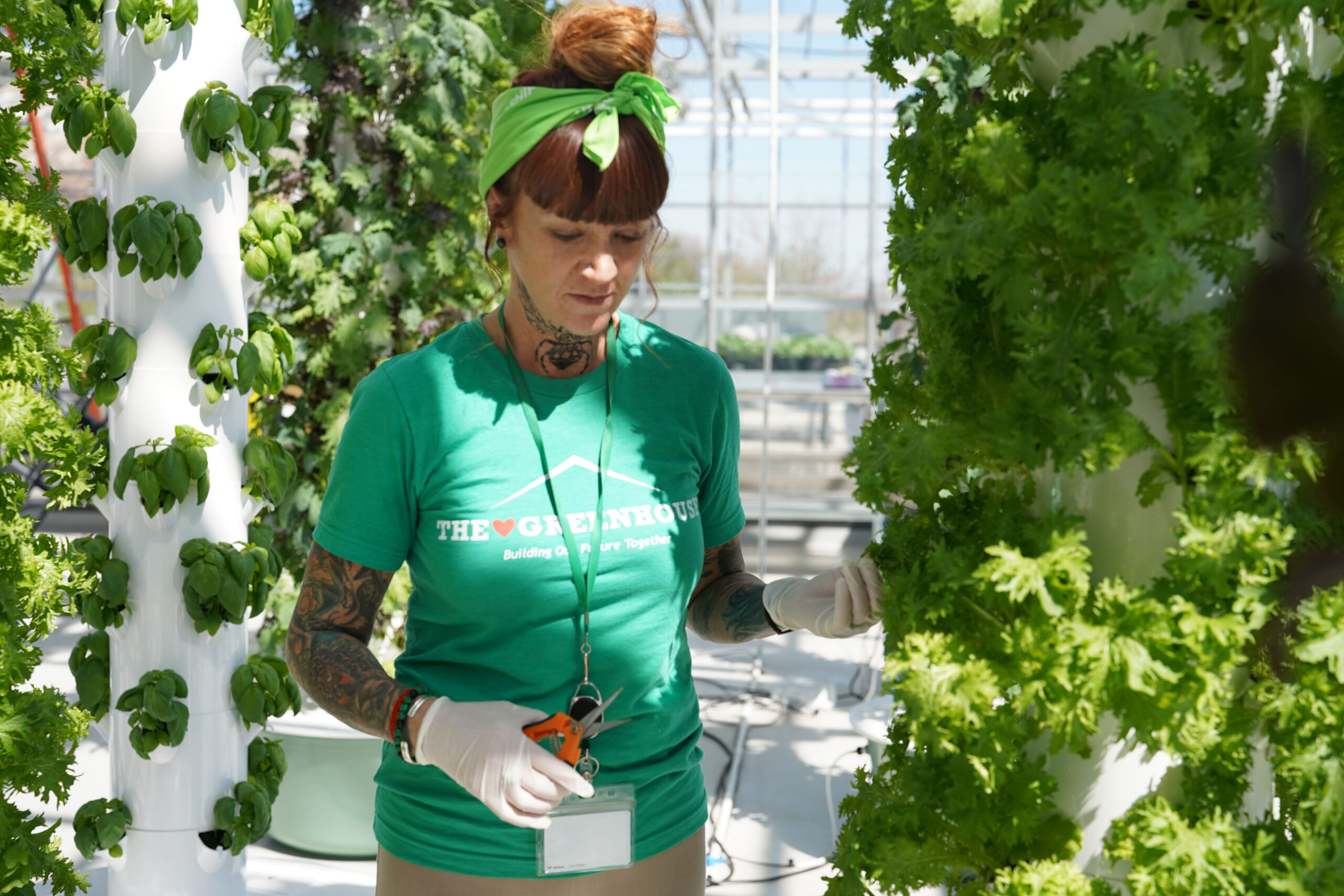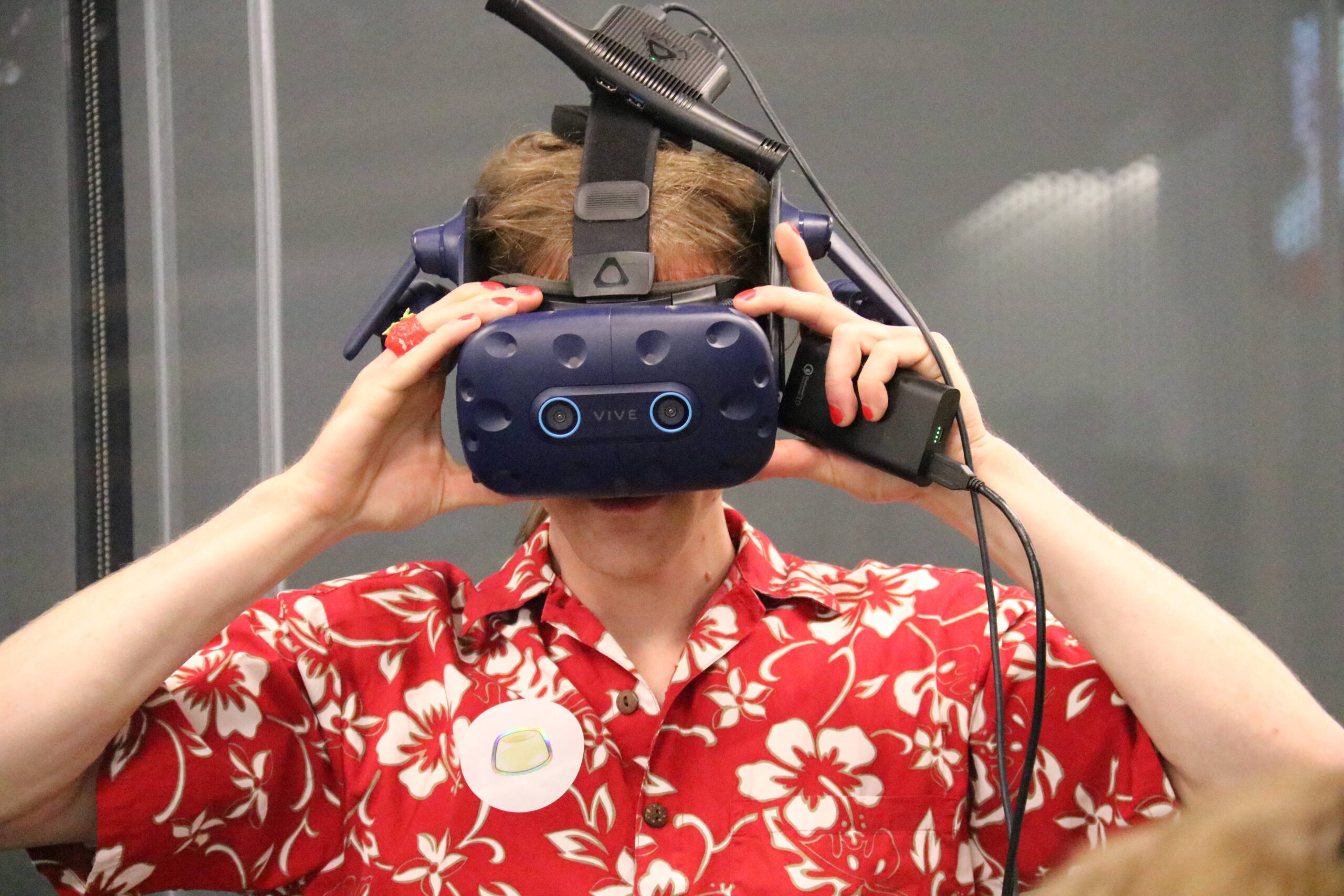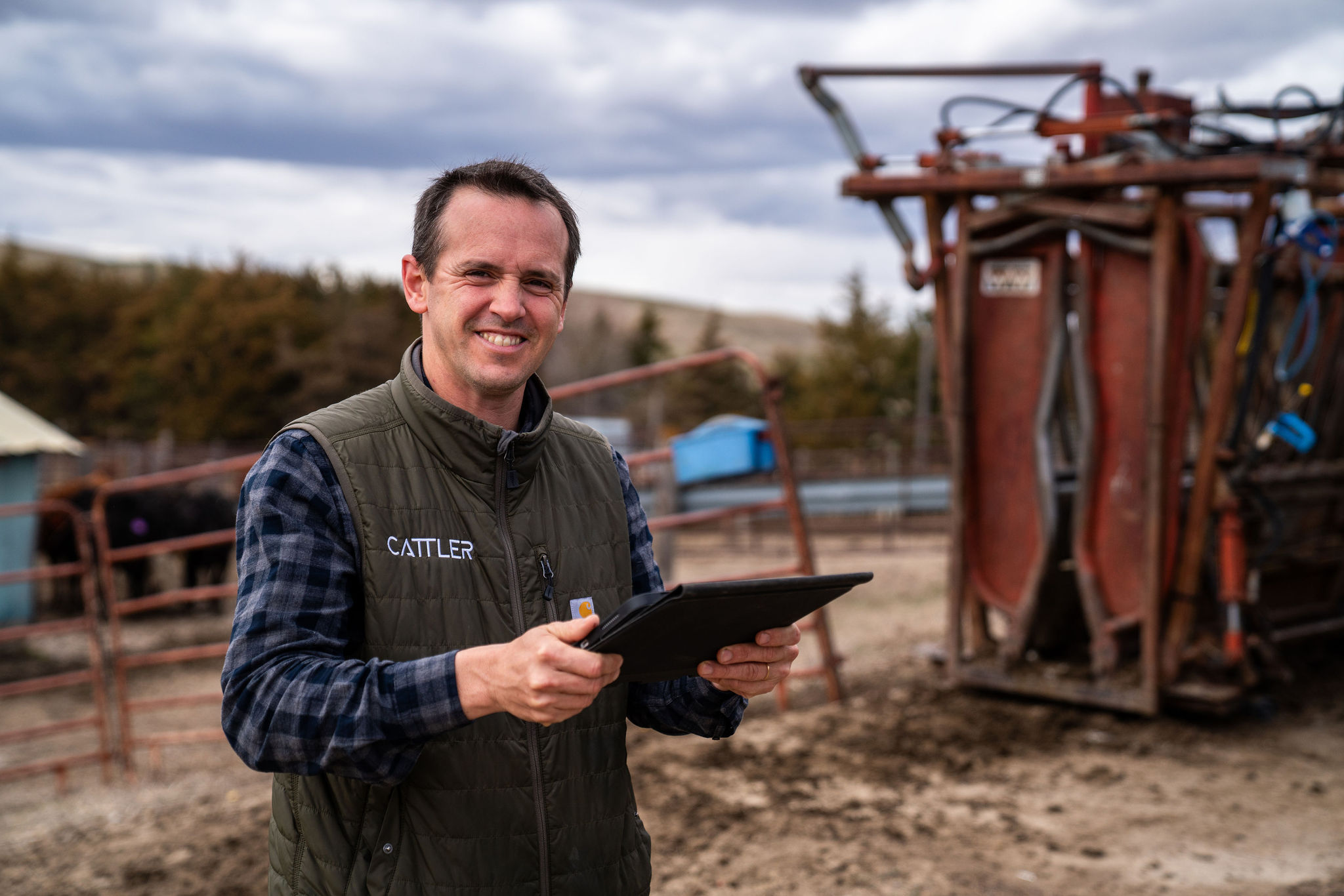
Josh Krakauer and Sarah Binder place their pins on the Pins & Threads installation at Big Omaha.
Two of the art installations at Big Omaha this year centered around looking at data in a new, more meaningful way. We hope you had a chance to take them in:
Pins & Threads
Brian Kelly teaches freshman-level courses about design thinking and making at University of Nebraska-Lincoln. His idea for Pins & Threads came from his interest in four things: mapping, information graphics, nighttime satellite photography of cities and social media.
“I wanted to try to create a framework for people to interact with. I set it up and let people take ownership of it. I don’t have control over how it turns out, whatever the conference demographic is is how it turns out.
The result is hundreds of tiny pins tacked on a wide white wall. In front of the wall is a wooden trough filled with objects. To participate, people selected a colored pin that represented their area of work (design, business/marketing/advertising, social/political/NFO/NGO, academic, science/engineering/technology). Then they picked up a wooden gender symbol, a wooden circle with notches indicating the number of years attending Big Omaha and a wooden wheel. The objects slide onto the pins, and then are placed in one’s geographic location on the wall.

“I took something that’s typically digital—a profile—and wanted to pull that information out in a physical way through a visual framework,” Kelly said.
“People have really loved it. Someone pins something, and then they notice someone pinning right next to them, and a conversation starts between two people. I love when those emergent things happen.
“I’ve also met a ton of people through Big Omaha, and am able to have all kinds of conversations with like-minded people. It’s fantastic.”
Specter
Close by was another installation, a beautiful display of various-sized lightbulbs hanging from the ceiling. It was put together by UNL students Katie Frankforter, Sean Coffey, Katie Horn and Zoe Cope. All are senior architecture majors, and some even had Brian Kelly as a professor.
Specter is intended as a commentary on water usage and skewed perceptions that often surround sustainability. The installation will be reused in some way, either recycled, given to a Big Omaha attendee, or repurposed in a UNL studio space.

Kate Brosseau spoke with the students about their project:
Cope: “We wanted to do something about sustainability, but we didn’t want it to be your typically green statement.”
Horn: “Oftentimes we hear these things [about sustainability] that go over our heads, such as people using 100 gallons of water per day, but no one can really envision what that number really looks like. Where does that water come from? What does 100 gallons really look like? We wanted to bring that down, and bring it to a piece that’s meaningful.”
Coffey: “There are 100 lightbulbs, and each represents 100 gallons. The lights skew your perception so that the shadows cast off all the bulbs, and you don’t really understand how many bulbs are there.”
Frankforter: “We wanted something you could look at and understand as an object, something transparent and skewed with different types of light.”
Cope: “When you first approach it, it looks like an object. When you get closer and see the shadows, it becomes something more. It shifts the perception, just as we want to shift the perception of what sustainability really means for the average consumer.”
Coffey: “Just giving yourself a hard fact doesn’t resonate. It doesn’t change behavior.”
Cope: “That installation stimulates a conversation and people ask themselves what they can do to make that number smaller. It just inspires people to think about it.”
Credits: Photos by Brian Kelly.
 Big Omaha content is made possible by Yahoo.
Big Omaha content is made possible by Yahoo.


